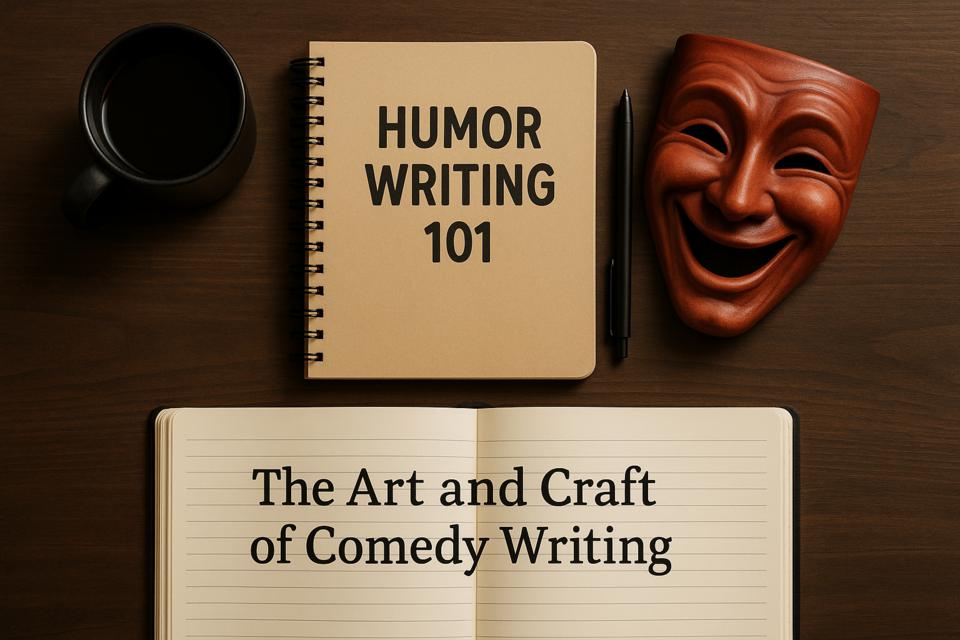Imagine taking a long, leisurely trip through the scenic Rocky Mountains, swirling around the cumulus clouds in a jet-powered helicopter, high above the peaks -- only to return to ground level with a resounding thud, followed by a hurried brush-off by your tour guide.
Rather than reflecting on how wonderful the journey had been, the final thought you would be left with is: What just happened?
As a writer, your task is to not leave your readers stuck out on a limb, literally or figuratively, waiting for a sense of closure or final resolution. Instead, the task of a writer is to provide answers -- or, at minimum, final outcomes -- to all of the questions and situations laid out within the earlier parts of the story.
A. Components of the Conclusion
Ideally, the conclusion should provide closure to the question first posed in the beginning of the novel, along with corroborating facts and details from throughout the novel.
Within the concluding material, it is important to provide a summation of the overriding message of the story, as experienced through the eyes of the protagonist.
B. Steps to producing a compelling conclusion:
In order to successfully satisfy readers, the conclusion needs to contain the following three elements:
1. Restatement of the thesis statement to bring the story full-circle, and to remind the reader of the main point of the story
2. Recap of main points in a concise, but thorough, manner
3. Reflective assessment of the events that transpired within the story, and the outcomes derived
The conclusion should offer a sensible resolution that is foreseen as being inevitable. Because readers have been made privy to the lead character's journey, they should already have a strong sense of the arc on which he/she traveled.
More specifically, the conclusion is merely intended to restate the bulk of the story's ongoing events and activities, which carried the protagonist from beginning to end.
Often times, the novel's conclusion will link back to the introduction. The writer accomplishes this by answering questions raised in the beginning of the story or, perhaps, returning to a sub-plot or anecdote introduced early on in the story.
Regardless of the specific correlative technique used, the purpose in making the connection is to make the reader's job easier, by not requiring him/her to constantly go back and forth in the novel, trying to find pieces of information to unify the theme of the story.
C. The Conclusion: What not to include
New characters, evidence, ideas or arguments -- All of these are highly unusual within the final segment in a story, for there will not be sufficient time/space to complete their storylines.
Dragging ending -- Writers need to learn how to quickly conclude a story without doing a disservice to the reader. Once the major conflict has been resolved -- then, only a brief wrap-up is needed. It is important that the writer not linger, for this tends to take away from the intensity of the story, and the relationship between the protagonist and readers.
D. Conclusion: Sequencing statements
The recommended order in which to include concluding statements, is to first start by addressing the needs of the lower-level conflicts based upon their appearance in the story, moving on to the more major conflicts, and then, finally, to the central conflict.
While you have, indeed, achieved a milestone accomplishment worthy of celebration -- you still have a bit more work to do.
A. Putting Things In Order
When writers are in the throes of composing text, they are encouraged to keep going -- to let the words and ideas flow out of them without the intrusion of mental censorship or second-guessing.
Yet, as helpful as it is for writers to freely compose a rough draft, they will then need to take the time to go back and re-read the text, checking for proper grammar, spelling, punctuation, inconsistencies, and, as a whole, how the words and ideas flow together.
The proofreading -- or, as we like to say, polishing of the prose -- phase is incredibly important, for it can make or break your review by a potential publisher.
B. Style Guidelines
AP and Chicago Manual of Style, that may dictate the presentation of your manuscript.
Such style guidelines stress the importance of producing text that is cohesive. For instance, if you include numbers with the text, you will want to stick to a set rule as to how you show these, e.g., numerical or written out.
Often times, style guidelines are very helpful, for they simplify the entire process of whether to use numbers or words, abbreviate or spell out, include a hyphen, or close-up the word, etc.
In the case of submitting a manuscript to a potential publisher, it is critically important for a writer to match the required style formatting guidelines.
Beyond the rules of formatting, many say that writing is all about re-writing. This is perhaps due to the fact that the writer often acts out of inspiration, whereby they write quickly and, in doing so, have a tendency to produce haphazard text.
D. Proofreading Tips
The following are several tips to ensure your work is publisher-friendly:
1. Re-read manuscript several times
Re-reading a manuscript four or five times is not unusual. Due to the fact that the human eye gets accustomed to seeing things a certain way, the repetitive reading is necessary.
2. Read Backwards
When proofreading, it has been recommended that you read backwards; that is, you begin on the last page and work your way back to page one.
Q. How does this help to pick out typos and grammatical errors?
A. It allows the writer to become a reader, for it takes him/her out of his/her storyline, so that he/she can simply read the lines as a hardcore grammarian would.
3. Employ other readers
After several times of re-reading your own novel, you will inevitably become so used to the word flow and sentence structure, that you will no longer have the distance needed to spot mistakes. As a result, it is a good idea to ask others to read your work.
4. Spelling & Grammar Check: limited capabilities
Do not rely solely upon spell check or grammar check. While each of these technological marvels has its very essential purpose, they fail to discern between specific words and/or sentence structures, should they fall outside the realm of what is considered to be proper punctuation and spelling.
Quite often, writers select an incorrect version of a word, e.g., dessert versus desert -- but the spell check will not detect this type of mistake. The same holds true of the grammar checker, for it will pick up anything that does not comply with the generally accepted rule.
In order to conduct a basic grammar and punctuation check on your manuscript, you should adhere the following rules:
Try and stay away from an excessive use of symbols and unnecessary punctuation; inclusion of these tends to distract the reader, rather than engage.
Colons
Colons, for example, should be used sparingly. Within titles, they are fine, and as a set-up for a list of some sort, they are also acceptable.
The problem is that many writers tend to abuse the use of colons to the point where series become lists, and thus, necessitate, (in the writer's opinion), the use of a colon.
Semi-Colons
One of the trickiest punctuation marks, the semi-colon is intended to separate a clause from a complete sentence. More specifically, semi-colons should be reserved for use in instances when the symbol could be replaced with the words, "This is what I mean."
For example: "She was throwing things and kicking the boxes on the ground; she was very, very angry."
Use of Numbers
Again, as we stated above, the use of numbers versus words is often dictated by the particular style guidelines being employed. Within Chicago Manual of Style, the accepted practice is to spell out numbers between one and nine, and use digits for anything over 10. The exception to this rule is with addresses, and other indicators of location that employ numerals, e.g., "She lives at 2 East Rockwell Street, apartment 8."
Commas
The proper use of the comma is the subject of much debate. Because the inclusion of commas is very subjective, it makes it all the more difficult to discern the appropriate usage. This is due to the fact that, of all the punctuation marks, the comma has the greatest number of purposes. For instance, commas can be used to break up a sentence into two main parts, making it easier to understand.
Commas are also used to separate items within a list. The big debate, however, is whether to include a comma between the second to last entry in a list and the word "and," or to omit it. For example, "She went to the store and bought eggs, ham, and bread," or "She went to the store and bought eggs, ham and bread." While either form is considered acceptable, the question to bear in mind is: "Does the sentence read well, and is the central idea not being compromised?
F. Wrapping Up
Unfortunately, (or fortunately, depending upon how you look at it), there are so many grammar and punctuation rules to consider when proofreading, we will not be able to explore them all within the confines of this article.
Yet, that does not excuse you from taking time, yourself, to brush up on the established rules and newly revised publishing guidelines. Refresh yourself with the basic rules, and do your best to impart them into your writing; that is your duty as a writer.
Because we all have a tendency to gloss over text we have read countless times before, it is a good idea to enlist the aid of someone you know, or someone whose services you may contract, to review your work prior to shipping it off to a potential agent or publisher.


























